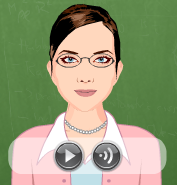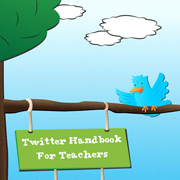
Susan L. Davis blogs for Voices from the Learning Revolution and Getting Smart, where this post first appeared on August 23.
The back-to-school flurry has begun. Teachers all around you are decorating bulletin boards, organizing their gradebooks, and collaborating on which ice-breaker games to use with their advisories. Your administration has prepared you well for the coming year. You have discussed ways to create meaningful learning experiences for your charges, learned how to keep them safe from sexual predators, and practiced jabbing expired Epipens into oranges. You think you are ready to open the doors and begin another school year….
But have you mastered the 21st century skills every teacher should know?
1. Can you conduct an effective online search?
- Do you pop your topic into your preferred search engine and skim the first page of responses for something that looks good enough – just like our students do?
 Do you know how to conduct a “clean” search that doesn’t predict what it thinks you are looking for based on your past searches?
Do you know how to conduct a “clean” search that doesn’t predict what it thinks you are looking for based on your past searches?
- Do you take the time to play with Google Scholar?
- Can you narrow your search by date or country?
- Can you reverse search a source to find its origin?
- Can you troubleshoot an IT problem by Googling it for yourself?
If you found yourself stuck on the first question, here are some resources to help you get back up to speed.
Alan November is the guru of all things related to Information Literacy, if anyone can claim that title. Every time I attend one of his conference sessions, I can’t believe how much I’ve forgotten since I attended the last one. For the basics, see November Learning, “Information Literacy Resources”. Also on November Learning Blog, you will find Michael Gorman’s “Twelve Reasons to Teach searching Techniques with Google Advanced Search… Even Before Using the Basic Search.”
If you are a visual learner, try Josh Catone, Mashable, “How to Google Search More Effectively Infographic”
If you want an eye-opening view of how research has changed, watch this talk by Joyce Valenza for TEDxPhillyEd, “See Sally Research.”
2. Do you know how to share resources in the Cloud?
- Do you still bookmark sites on your desktop or laptop? Really?
- Or do you take advantage of any of these social bookmarking sites?
- Diigo is one of those go-to basic tools that everyone should possess. It allows you to save your bookmarks to the Cloud, annotate articles, tag for organization, share stuff with colleagues or student, and access saved information from multiple devices.
- Evernote syncs all of your saved information with one application for multiple devices. You can also search your saved resources, including pictures, by tag, printed text, or even readable text captured in images and share your information with others.
- MentorMob uses the “playlist” concept to collect and share information. I can see great potential in this application as place to gather multiple sources for creating a flexible architecture for learning.
- Pinterest may look like it’s just for crafters and wedding planners, but its appeal is growing for visual thinkers who can pin images from websites to create “boards” that can save, organize, and share information. (It’s also great if you are looking for ways to decorate a classroom.)
3. Can you flip a class?
- Do you find yourself lecturing for more than ten minutes in a class period?
- Do you expect your students to copy your notes from the board or take dictation from a PowerPoint presentation that digests the textbook they didn’t read?
- Do you still wish you could get to the “fun stuff” — discussion, labs, critical thinking, and authentic application of ideas?
I’ve talked to lots of teachers who know better, who understand that even their best lectures are no longer effective as a means of delivering large chunks of information. They’ve heard the brain research about what happens to students’ attention spans after ten minutes of information overload (see John Medina’s Brain Rules #4: “The 10-Minute Attention Span”). They get the arguments for flipping a class and even long for the time and training they feel they need to produce online materials. They acknowledge that this would allow them to make better choices about how to spend their precious face-to-face class time with their students. But make a video or share a voiceover for a digital slideshow? Too daunting, they think, too technology-skill heavy. I know because I’m one of them.
 I am challenging myself – publicly, in this blog post — to create one flipped class each week. (Hey, I’d be happy right now with one decent flipped class.) So I’m going to start with TED Ed, where I can choose any TED or YouTube video, add a quick quiz, and follow up with critical thinking questions. I feel pretty confident about creating a slideshow with voiceovers using VoiceThread since I’ve worked with students who have used it with good results.
I am challenging myself – publicly, in this blog post — to create one flipped class each week. (Hey, I’d be happy right now with one decent flipped class.) So I’m going to start with TED Ed, where I can choose any TED or YouTube video, add a quick quiz, and follow up with critical thinking questions. I feel pretty confident about creating a slideshow with voiceovers using VoiceThread since I’ve worked with students who have used it with good results.
I could get better at Voki, which uses a talking avatar, to create something to engage my young middle-schoolers. After I’ve built up some confidence, I can try using applications on my iPad like Educreations or Screenchomp (for screencasting) and Sock Puppets, well, just because they are so loveable.
4. Can you connect with other educators to create your own dream team for learning?
- In order to become a better teacher, do you depend upon stale presentations or summer reading chosen required by your district or administration?
- Do you sit in your classroom, isolated and depleted of energy, longing for meaty conversations with colleagues that can help you d revive your spirits and grow as a professional?
- Or do you know how to take charge of your own professional development by building a personal learning network that operates 24/7?
 First and foremost, get past all the nattering nabobs of negativism and start connecting with other educators on Twitter. (Tom Whitby provides a nice introduction to “Twitter for Teachers” that may help get you past your prejudices about celebrity status updates.) If you need more detailed instructions for how to get started, check out Sue Waters’s blog post, “A Twitterholic’s Guide to Tweets, Hashtags, and All Things Twitter.” and/or download PLP’s Twitter Handbook for Teachers.
First and foremost, get past all the nattering nabobs of negativism and start connecting with other educators on Twitter. (Tom Whitby provides a nice introduction to “Twitter for Teachers” that may help get you past your prejudices about celebrity status updates.) If you need more detailed instructions for how to get started, check out Sue Waters’s blog post, “A Twitterholic’s Guide to Tweets, Hashtags, and All Things Twitter.” and/or download PLP’s Twitter Handbook for Teachers.
Another overlooked resource for learning connectedly is Google Reader, which may feel more comfortable as a space to start sharing articles and resources with colleagues you already know. Google Hangout (a video chat that is part of Google+) is another way to connect with mentors and former colleagues outside the walls of your own school.
Finally, look for online communities that speak to your professional needs. Classroom 2.0 (its Learning 2.0 Conference concludes today), the Global Education Conference (which sponsors its own global synchronous confab in November) and The Educator’s PLN are a good place to start to find the colleagues who can help you stretch as an educator. Online communities sort themselves out by particular teaching styles, grade levels, subjects, and any number of other personal interest groupings. And if you move fast, you can dip your toes into the archival waters of Connected Educators Month.
My Point
This post is not meant to expose any teachers who lacks skills. We all can probably use refreshers in any one of the essential skills I list here. Rather, my hope is to inspire you to do what you must to be the best teacher you can be in the here and now of the twenty-first century.
That means, first, being a model learner for your students and fellow educators; then stepping up and taking charge of your own learning to gain the skills you need; next, learning from the best teachers you can find, and, finally, giving back to your professional community by sharing what you learn.
Susan Lucille Davis
Latest posts by Susan Lucille Davis (see all)
- Show and Tell PD for Teachers - February 28, 2013
- Skills Every 21st-C Teacher Should Know - September 18, 2012
- Knocked Out of My Orbit: Becoming a 21st Century Educator - January 17, 2012


Susan,
This post is SO helpful to me. I am still learning so many things about how to be an effective 21st-century educator and sometimes it takes a while to curate a list of skills and the resources to acquire those skills. It was nice to have several (with very helpful resources included) right here in one spot. I not only appreciate your optimism and your enthusiasm, but also your transparency and the challenges you publicly set forth for yourself. To me, those are signs of a an excellent teacher AND learner. Thank you so much for sharing this. I am sharing it, too, with my colleagues!